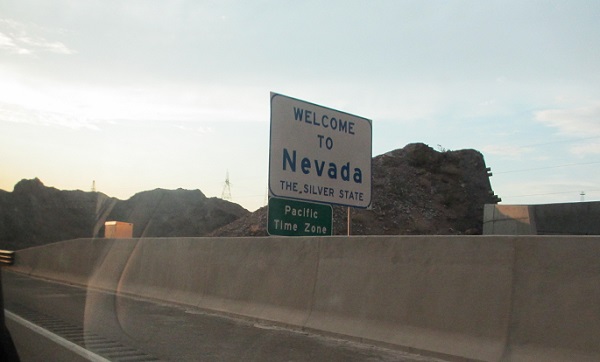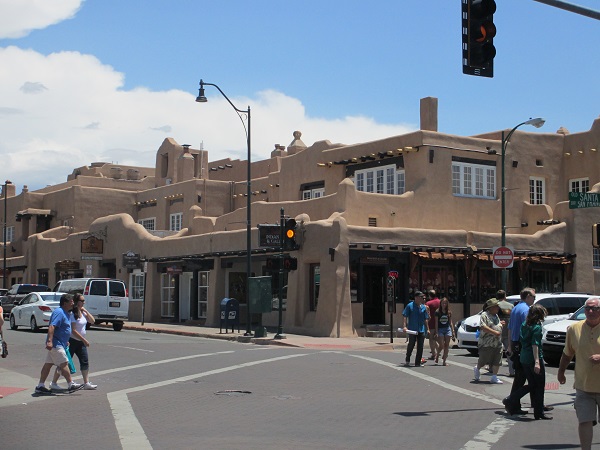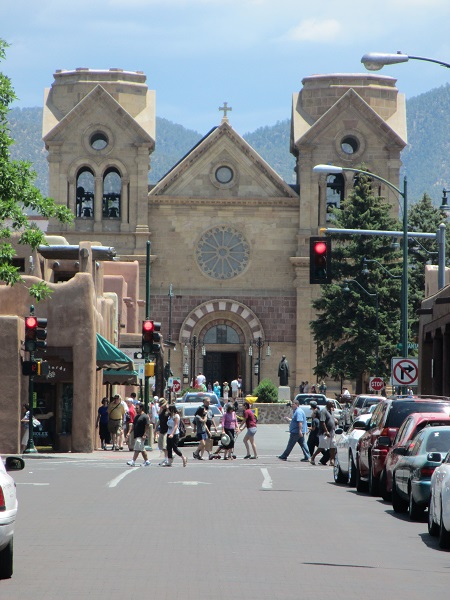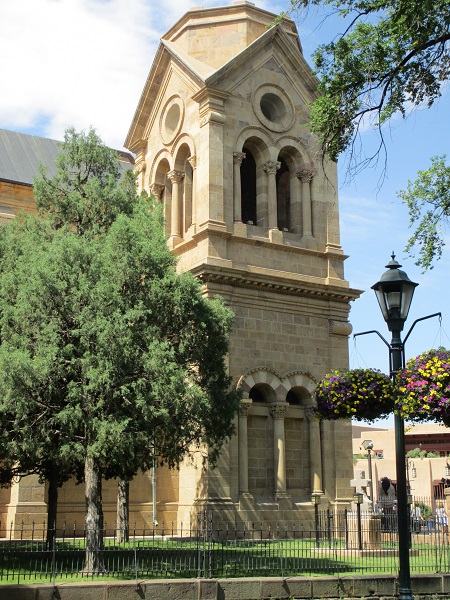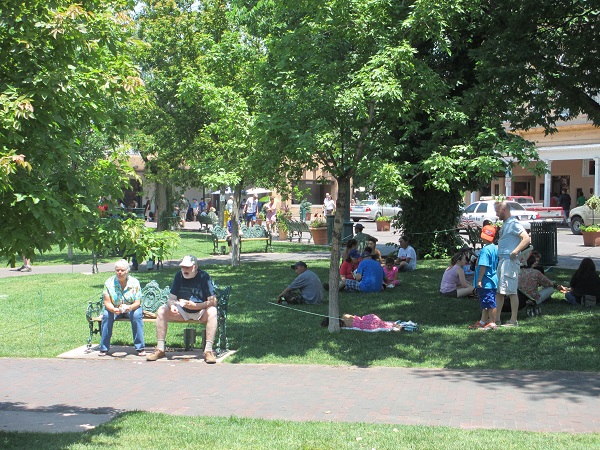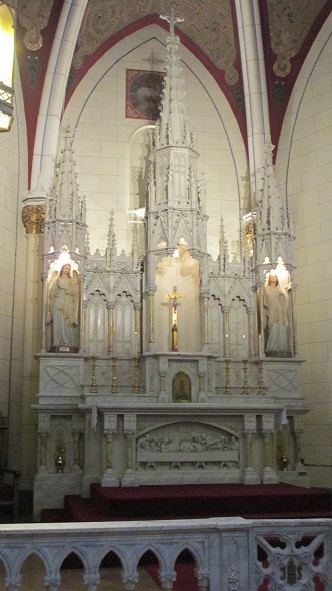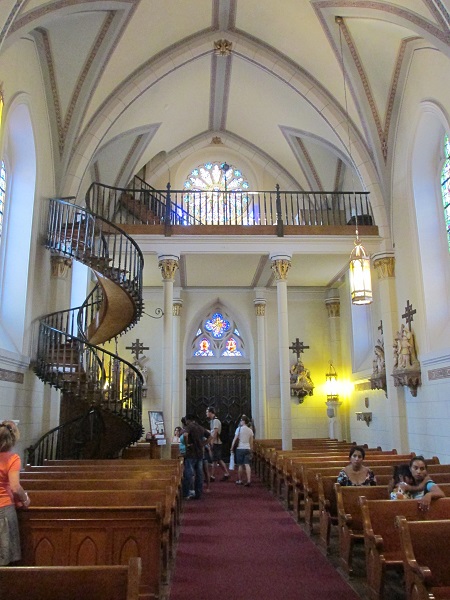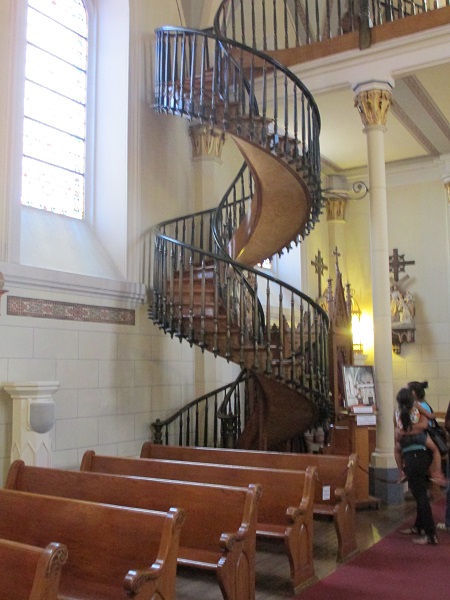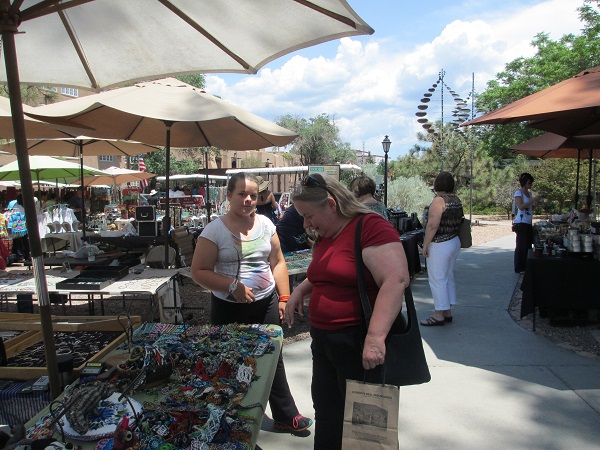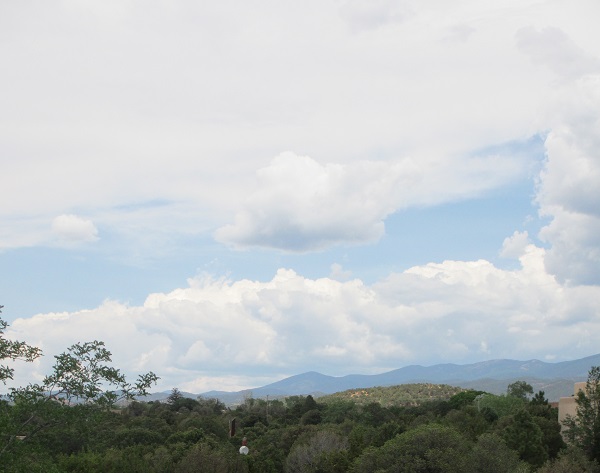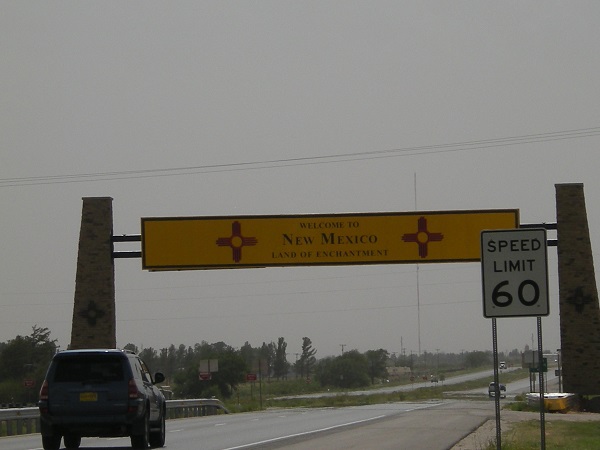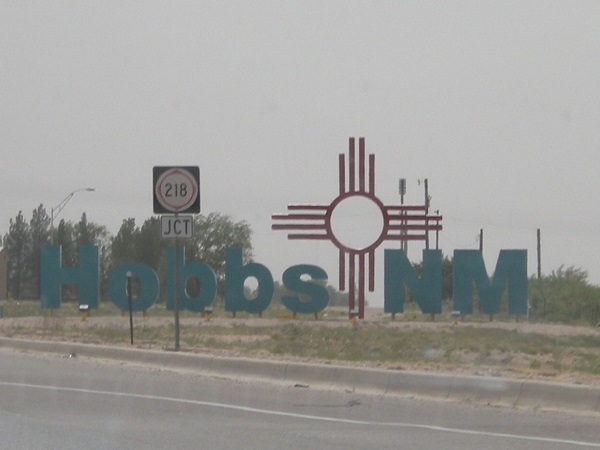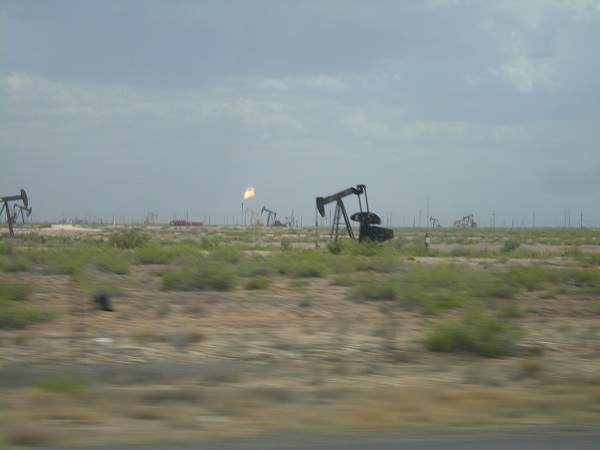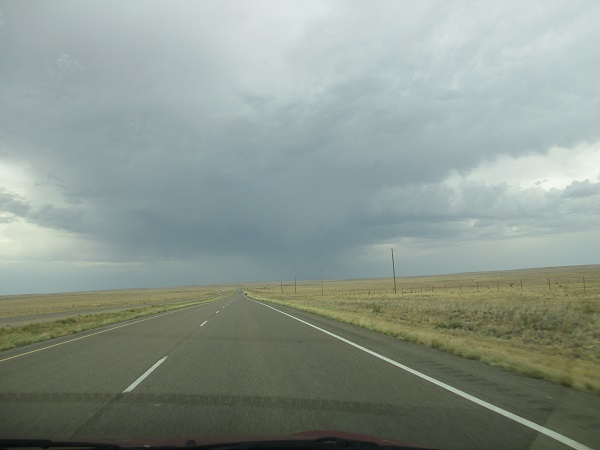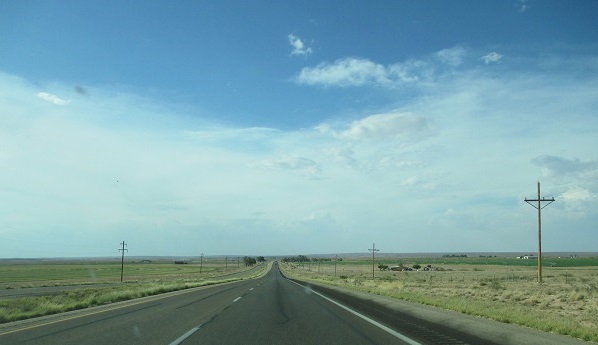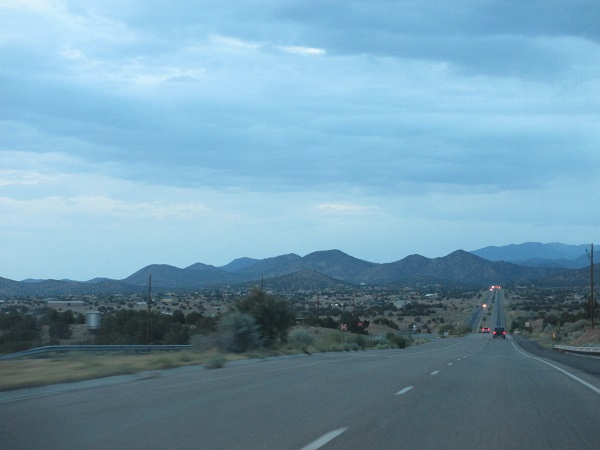Somewhat like Bob Dylan (but not too much), I’m stuck inside of Vegas with the Arizona blues again. I get to escape Wednesday morning for California. And given my opinion of California geography, if I consider that an escape you can judge my opinion of Las Vegas.
We left Santa Fe at mid-morning Monday, drove south to Albuquerque and got on I-40 going west. Past Albuquerque, we started getting into painted-rocks country, with mesas on both sides of the road striped red and white like slices of fat bacon. The landscape still had some short brown grass, tumbleweeds and greasewood with stands of juniper and piñon in the higher altitudes around the cities.
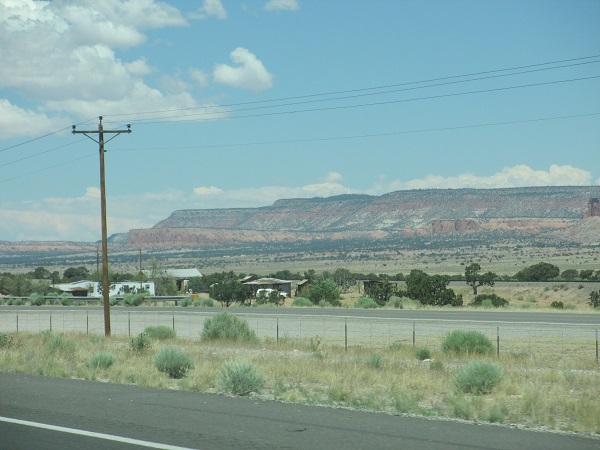
Lunch and gas were at Gallup, near the Arizona border. I wanted to get through as much of Arizona as possible without having to spend any money there, but the car doesn’t have a big enough gas tank to make it all the way across. We ate at a Golden Corral, which was absolutely crammed with people. We mentioned the crowd to the waitress, who said yes, it was always like that on the first of the month, and I thought, that’s right—first of the month and everyone got their government checks, so take a few spare dollars and go out to eat.
One thing northwest New Mexico has that a lot of people don’t know about is lots and lots of volcanic rock. The region had major volcanic activity starting about three quarters of a million years ago, and as recently as three thousand years ago, well within the period of human occupation. I took a bit of panoramic photography at the Northwestern New Mexico visitors’s center.
Once into Arizona, what we got was lots of flat, with dim blue distance full of mountains. I was struck by the number of abandoned structures: houses, small business buildings, and so on just left to fall down of their own accord, which takes longer to happen in the desert because of the lack of rain and general humidity to help decay along. We also saw the occasional house or other structure built in the shape of a traditional Navajo hogan, but done in modern materials. People adapt.
Another thing we had a lot of was trains. Long trains, every few minutes. Trains that were a couple of miles long, car after car after car of double-stacked containers coming out of Long Beach and headed for a Wal-Mart near you, probably. Other trains were mixed consists of hoppers (lots of raw commodities), boxcars (dry goods), and tank cars (could be almost anything).
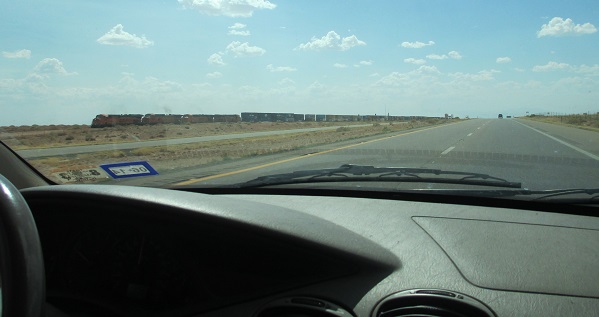
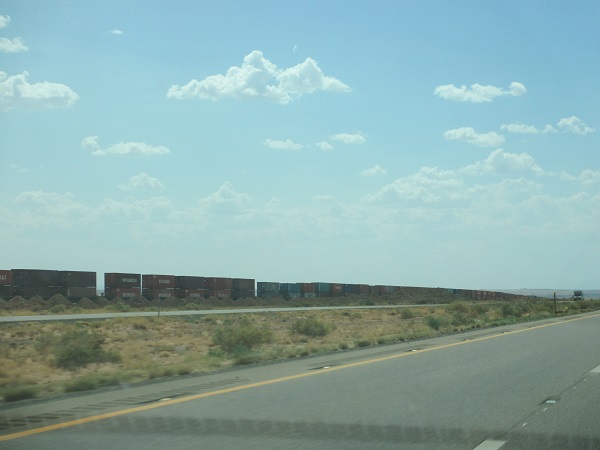
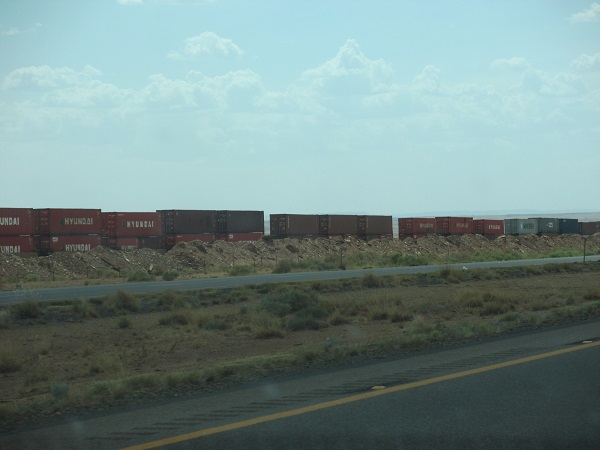
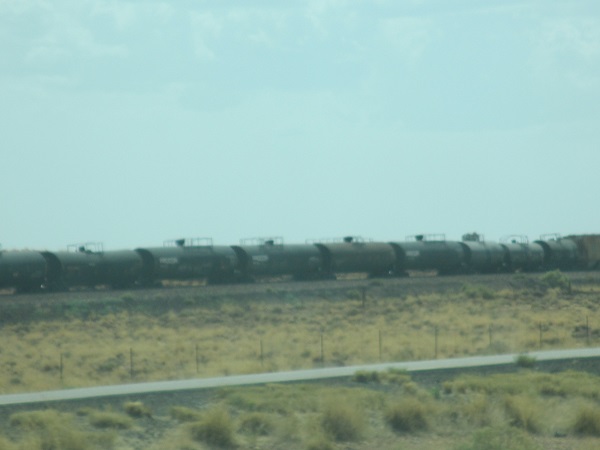
Long train is . . . looooooooooooooooong.
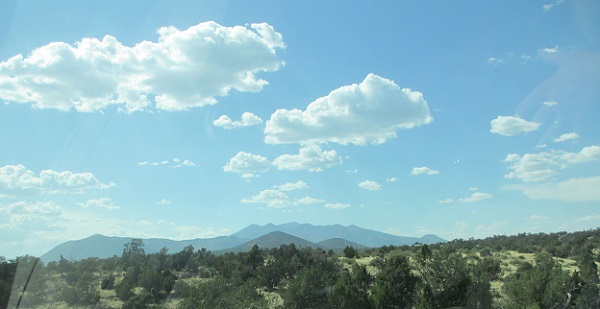
Coconino County, the home of Krazy Kat and Ignatz Mouse.
Coming into Flagstaff we started getting trees again—first scrub, then actual conifers as we moved into the Coconino and Kaibab national forests.
Ever since Santa Fe, a stream of roadside signs delighted in reminding you that you were traveling on Historic Route 66, and pointing you off the interstate at places where fragments of the original highway still exist.
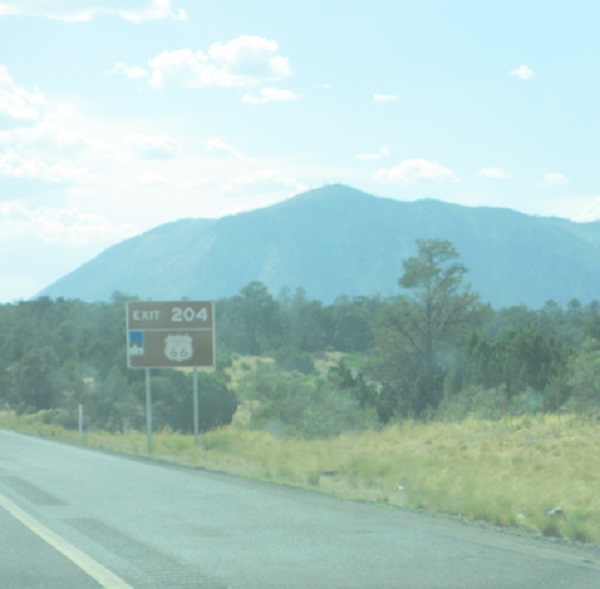
West of Flagstaff we got afternoon showers building up again, with very welcome cloud cover that kept the afternoons from being so brutal as they might be. At one point, though, we spotted something that didn’t really act like a cloud. It hugged the top of a ridge and spilled downward across it. As we got closer, we realized we were looking at an actual forest fire, with visible flames as the fire topped the ridge and started down the other side (look dead center in the second picture). A couple of miles later we stopped for gas and learned it was named the Dean Peak fire, which by Tuesday night had burned about 2,400 acres and still wasn’t contained at all.

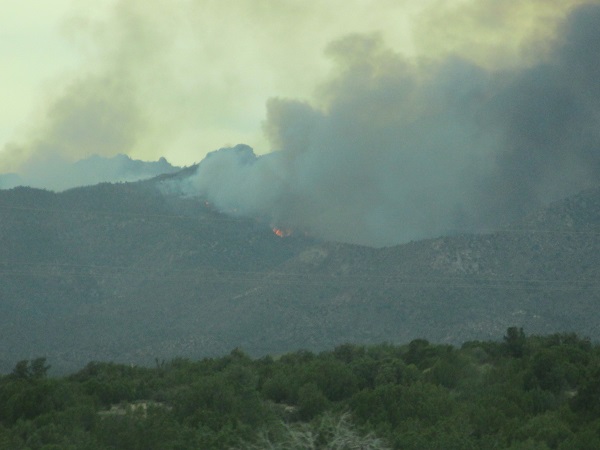
And finally, about 7:30, we crossed into Nevada.
